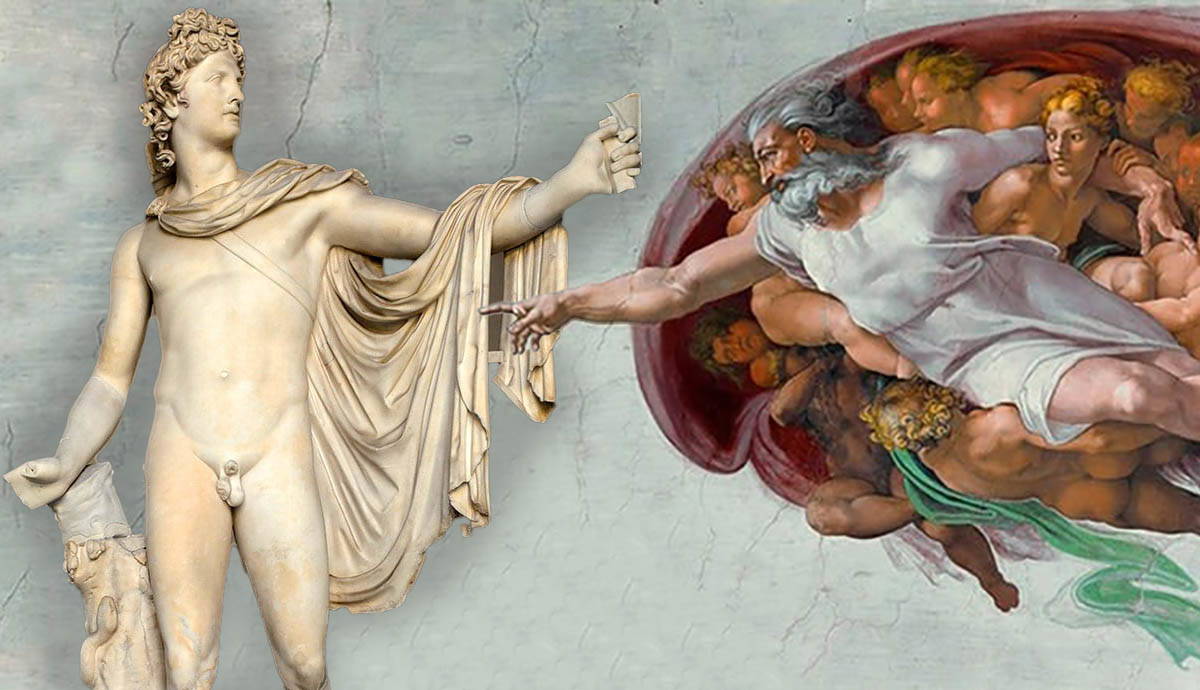
Classicism, or the reiteration of classical themes, styles and imagery in art, architecture, literature and other cultural aspects, is omnipotent in western society. In fact, democracy itself was born from Athenian dēmokratia, combining the ancient Greek words dēmos and kratos, which mean the body of people and rule, respectively. One of the most celebrated periods of classical revival was the European Renaissance, particularly the Italian Renaissance, which boasts some of the western world’s most famous artistic and architectural masterpieces, such as Michelangelo’s David and Saint Peter’s Basilica in Vatican City. This resurgence of Greco-Roman culture in the Renaissance period is called Renaissance classicism, which can be seen in many cultural domains during the time.
Renaissance literature and classicism
The rebirth of classicism during the Italian Renaissance partially manifested itself in the rediscovery of ancient Latin and Greek texts by authors such as Cicero, Plato and Aristotle. These works became idealized and regarded as an essential part of the cultural enlightenment and intellectualism following the ignorance of the medieval period.

Italian authors also drew on ancient Greek and Roman antecedents in their production of theatre and poetry during the Early Renaissance. Poets Dante and Petrarch are particularly notable in this respect. Dante’s Divine Comedy is written in an ancient Greek style tri-part play structure and continuously draws on classical poetry, specifically Virgil’s Aeneid. It even features Virgil himself as Dante’s guide into the underworld. Petrarch, the Latin scholar, lyricist, author and poet was also a strong proponent of humanism and many of his works draw upon Roman literature and culture.

This classical revival spread throughout Italy and into other European countries. Other famous Renaissance authors include Niccolò Machiavelli, Michel de Montaigne, William Shakespeare and Giovanni Boccaccio.
Renaissance architecture and classicism
One of the most important and defining elements of the European Renaissance period was Italian Renaissance architecture. Italy underwent a marked shift from the Gothic style, associated with the Medieval period, into the Renaissance style, associated with the ancient Greco-Roman periods.
This transition can be seen in some contrasting aspects of each architectural style. One of these was the transition from the Gothic pointed arch to the Romanesque Renaissance arch. Additionally, Renaissance architecture mimicked the ancient Doric, Ionic, and Corinthian style columns as well as the Roman dome and tunnel vault.


Early Renaissance architecture was known for displaying classical facades while still incorporating Gothic elements in its structure. The Santa Maria Novella cathedral (1420) in Florence, Italy exemplifies the transition from Gothic to Renaissance architecture. While the earlier-built portion of the cathedral incorporates the sharper, darker elements of Gothic architecture, the facade, designed later by Leon Battisti Alberti, is decorated with Romanesque arches and represents a Roman temple with pillars and a traditional pointed pediment roof.

As the Renaissance style spread throughout Italy and Europe, the architecture also changed, representing a more ornamented, traditionally classical style. The 15th and 16th centuries, known as the ‘High Renaissance’, featured famous architects such as Raphael and Michelangelo. The Tempietto (1502) at San Pietro in Montorio, designed by Donatello, exemplifies the classical style with a Roman dome and Doric pillars. It also has Roman arches, Greco-Roman style statues and triglyph details in the interior.

Renaissance art and classicism
Renaissance visual artists also reiterated classical styles. One of the most prominent mediums for this appropriation was painting, which had classical imagery and used ancient masterpieces as subjects for art pieces. Notable artists such as Andrea Mantegna, Giovanni Bellini, Titian, and Leonardo da Vinci all produced artwork during the Renaissance period.

Classical themes were prevalent in painting during the Renaissance. While Catholicism remained a prominent subject, there was a rise in mythological details and narratives in works during the time. Sandro Botticelli’s The Birth of Venus (1484-1486) from the Early Renaissance pictures a naked Venus, a prominent goddess from Roman mythology (Greek Aphrodite) rising out of the sea.

Raphael’s Academy of Athens (1509-1511) fresco from the High Renaissance pictures several ancient Greek philosophers amongst other figures. The piece is set in what appears to be a combination of Athenian and Catholic temples, as it features many classical elements and has a cross shape. In the background are Greek gods Apollo and Athena.
Painting was not the only medium that was affected by this fervor for the classics. Sculpture, too, began to embody classical realism and idealism. There were numerous Renaissance recreations of Greek and Roman statues or new pieces that were made in the ancient Greco-Roman style. The most famous example of such is Michelangelo’s David (1504). David exemplifies numerous elements of the classical realism, standing in the archetypal contrapposto position against a log (used for support) with a chiseled figure, strongly resembling a Greek god such as Apollo.


Classicism in other periods
It is important to recognize that, while classicism was very prominent during the European Renaissance, it also extended into periods after the Renaissance and into Neoclassicism. In fact, many aspects of modern western society draw on ancient Greco-Roman culture. The Italian Renaissance may have been the ‘rebirth’ of classicism, it was not the only period that it existed in, and it is possible to see elements of classicism in many artistic, architectural and cultural realms today.







